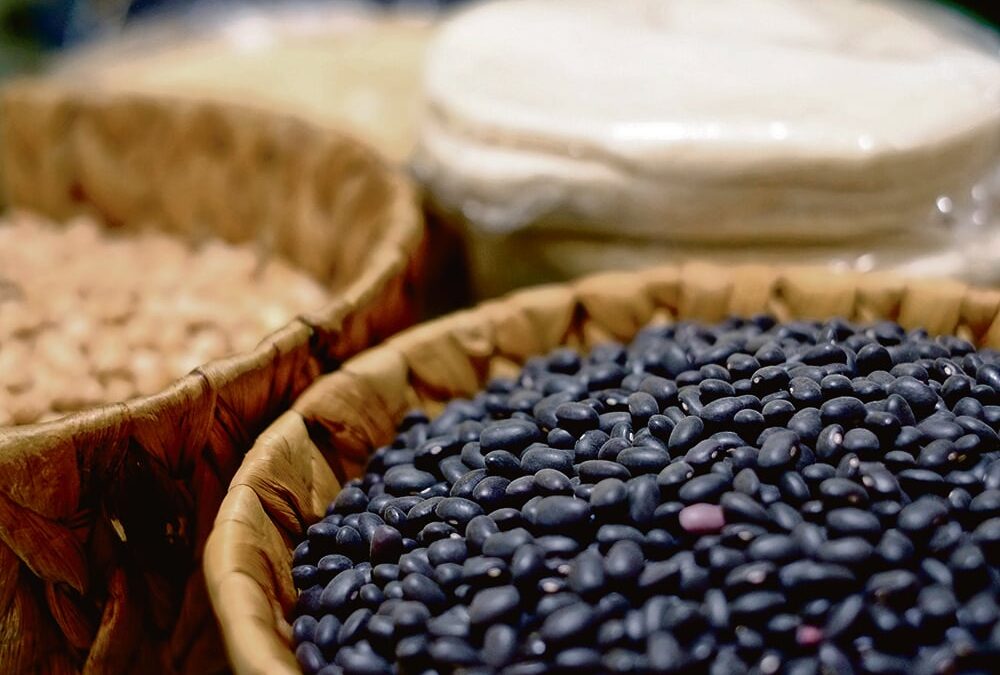Statistics Canada estimates farmers will plant 358,150 acres to beans this year, a 12 percent hike from the previous year
SASKATOON — Growers in Canada and the United States planted more black and pinto beans and fewer navy beans in response to Mexico’s production hardships, say industry officials.
Orion Roy-Wright, a trader with ADM Edible Beans, told the Global Pulse Confederation (GPC) that producers in those two countries increased black bean plantings by 15 to 20 per cent.
Related stories:
- Mexico in the market for more beans this year
- Beans mounting a comeback?
“Everyone sees demand for black beans in Mexico, and farmers have done well off it so far,” he said.
Mexico has had three straight crop failures due to poor rainfall during the spring/summer crop season, which runs from July through December.
Some analysts are forecasting a further contraction of Mexican bean acres in 2024 due to a lack of financing, poor seed availability and another drought year.
Roy-Wright believes pinto plantings in Canada and the U.S. are also up about 15 per cent due to Mexico’s crop problems.
ADVERTISEMENT
However, the same cannot be said for another major class of beans.
“We see navy beans differently,” he said in the GPC article.
“There’s a discount now that means you’re not incentivizing people to grow navies versus other classes, so we have acreage down by 15 per cent.”
Navy beans often compete with canola for acres, and canola is winning that battle because of better returns.
The U.S. Department of Agriculture expects American farmers will plant 1.32 million acres of beans this spring, a 12 per cent increase over last year.
Statistics Canada estimates farmers in this country will plant 358,150 acres, also a 12 percent hike.
Farmers in Manitoba are forecast to plant 201,000 acres, a 41 percent increase over last year and one of the biggest crops since soybeans arrived in the province.
ADVERTISEMENT
Dennis Lange, pulse crop specialist with Manitoba Agriculture, thinks there will be 90,000 to 100,000 acres of pintos, 40,000 to 50,000 acres of blacks and 20,000 acres of navies.
However, seeding has been delayed due to wet weather in the province’s prime bean growing region. If it stays wet it could get “interesting” because growers may shift out of beans and into canola, he said.
June 10 is the cutoff date for full crop insurance coverage in Manitoba’s main bean growing region.
Lange said pintos and blacks are easier to grow than navy beans and generally deliver higher yields, so that is another reason growers are prioritizing those two classes.
There is also a lot of direct harvesting of beans these days, which benefits blacks and upright pinto varieties.
He said there are too many quality constraints growing navies, and only three buyers of that class of bean are left in the province.
Mexico was an active buyer of black and pinto beans in 2023-24, and that is not expected to change in the upcoming year.
ADVERTISEMENT
The country consumes about 750,000 tonnes of beans annually. The split is 320,000 tonnes of black beans, 300,000 tonnes of pintos, 75,000 tonnes of yellow beans and the remainder being other varieties.
Production in Mexico in 2024-25 is expected to be higher than last year, but last year was terrible, so demand should remain strong.
“We’ve already seen them quite engaged in taking tonnes,” Roy-Wright told GPC.
He had mixed views on where Mexican bean acres are heading in the future.
On the one hand, Mexican farmers have struggled to make a profit growing corn, so they could be looking to alternative crops such as beans that haven’t experienced the same price slide.
However, beans are a capital-intensive crop to grow, and Mexican farmers are finding it harder to compete with imported product due to the strengthening peso.
Fuente : https://www.producer.com/news/mexican-crop-troubles-benefit-canadian-bean-growers/

